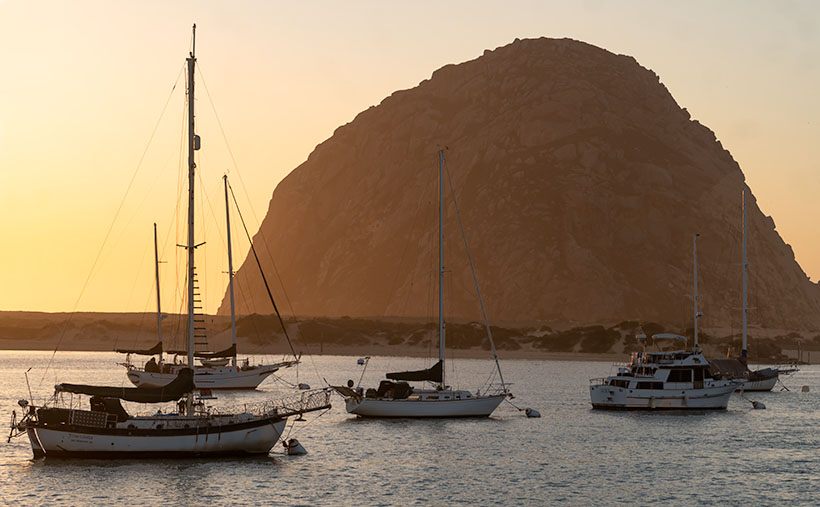The grass is always greener. People who live by the beach travel to the mountains for skiing. Others living in snowy climates come to the deserts to dry out and get warm. What do we desert dwellers do for a change of pace? We go to the beach of course.
After being cooped up in Arizona for the last year, when Queen Anne and I finally got our vaccine shots, we headed off to the left coast for a couple of days. It’s the anti-desert if you will. We drove an extra distance to our favorite part of California because we don’t care much for the giant megalopolis of San Die-Angeles-Barbara. There are too many people there, and they’re all out driving on the freeways.
We drove to what we call—the central coast—the Morro Bay area, and the little hamlet of Cambria. I love the place so much that two out of my three wives spent their first honeymoon there—and the third would’ve preferred it over Utah.
We spent three nights sleeping to the sound of crashing waves on the beach while a fireplace warmed the room. During the days, we put our masks on and enjoyed meals at our favorite diners and discovered new cafes (did you know that there are only four restaurants in the US with a Michelin star?). We strolled along the beach until my calves hurt, drove up to the Big Sur landslide, and peered into the windows of boutiques and galleries. Most importantly—we tasted wines at open vineyards—something we haven’t done since our 2016 Alaska trip. Let me tell you, our local Safeway gets really testy when we set up tables and start uncorking wine bottles for sampling.
But I also needed to photograph something fresh. Last month, I looked at the thumbnails on my New Work index page and realized that everything was brown. No matter how green the saguaros are, the Desert Mountains are brown. Aargh, I’m drowning in the dust. I need water. While Anne was snoring, I snuck out of the room to capture the sunrise, or after dinner, I’d plant her on a bench (she can’t walk when she’s full, so there isn’t much chance that she’d run off) while I walked around the harbor and snapped pictures as I did for this week’s featured image.
I consider Morro Bay’s town to be the southern edge of the famous drive through Big Sur. The Pacific Coast Highway (California 1) returns to the sea here and then continues up through the world’s best coastal scenery section. Here the Santa Lucia Range plunges 2,000 feet into the Pacific Ocean. The highway is temporary here because rock-slides frequently rip the road away from its precarious perch, like this year.
Morro Rock is the stump of a grand old Santa Lucia mountain that time and the sea have worn away. The rock and four neighboring smokestacks are a landmark that you can see from the mountain passes miles away. Morro Bay’s town used to be renowned for the abalone, but that delicacy has been fished out and is now protected. The commercial fishermen have moved on, so mostly private yachts are moored in the town’s harbor.

In this week’s featured image—Morro Bay Harbor—I tried to capture part of the local fleet using the big rock as an anchor. The setting sun made the cool, moist air glow gold. There’s an unexpected extra between the two boat groupings. In the water near the far shore is a sea otter floating on its back. Only his feet and head sticking above the water. You’ll never see it in these photos or on the Web Site. He’s there, at least I think he’s there . . . well I’m saying he’s there, and you’ll have to take my word for it.
I hope you enjoy April’s change of scenery. You can see a larger version of this week’s picture on its Web Page by clicking here, but if you want to find Waldo—the sea otter—you’ll have to buy an enlargement. Be sure to come back next week for another shot from the Big Sur coast and more fish tales.
Until next time — jw
